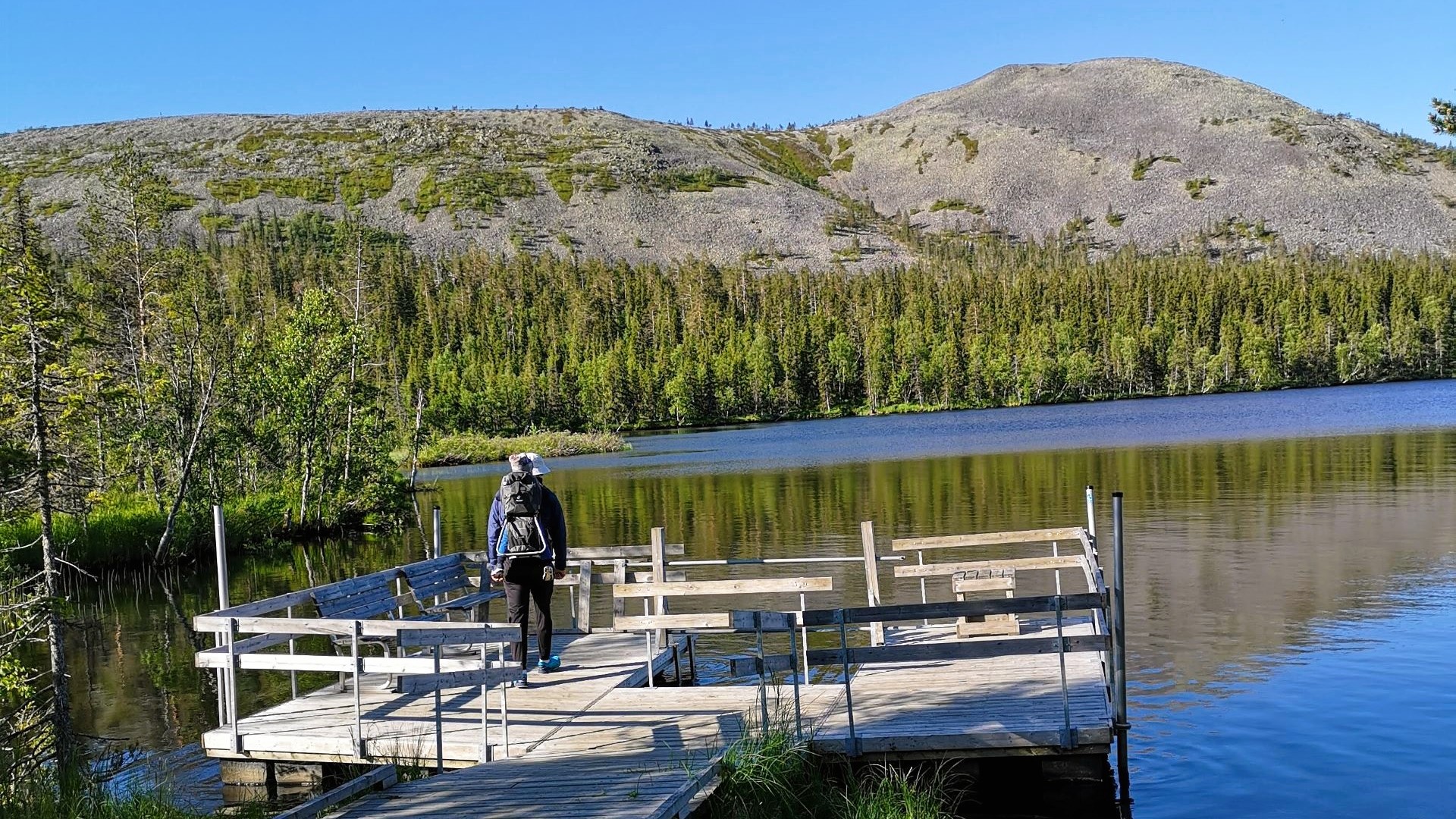Summer Nature of Ylläs: Wildlife Observation Guide
The summer nature of Ylläs offers a unique opportunity to observe northern wildlife. Lapland’s summer fell landscape comes alive when numerous animal species become active after the long winter season. In Ylläs’ diverse terrain, you can encounter everything from small forest dwellers to majestic moose and reindeer. While hiking, you can admire the area’s rich fauna and gain unforgettable experiences. This guide provides a comprehensive overview of what animal species you might meet during your summer hikes in the magnificent nature of Ylläs.
What animals can be seen during summer trips to Ylläs?
In the summer wilderness of Ylläs, you can encounter a diverse range of animal species. Reindeer are the most visible animals in the area, grazing freely in the fell regions. These semi-domesticated animals have adapted to human presence and can often be seen up close along hiking trails.
Moose prefer more forested areas, and encountering them is always an impressive experience. These impressively sized animals typically move during early morning or late evening hours. Smaller mammals, such as mountain hares and squirrels, can be seen scurrying along the paths throughout the day.
Foxes and pine martens are somewhat rarer sights, but an observant hiker may spot these interesting predators. During the summer season, animals are more active than in winter, so the opportunities for wildlife sightings are excellent. Lemmings and other vole species often dash across the routes extending from low wetlands to the high fells.
When is the best time of day to see animals in the Ylläs area?
In wildlife observation around Ylläs, timing is crucial. Most mammals are most active during twilight hours – early in the morning around sunrise and in the evening at sunset. In the summer months in Lapland, this means very early morning hours or very late evening moments, as midsummer provides daylight around the clock.
Reindeer and moose typically move most actively in the early hours of the morning, between 4-7 AM, and in the evening between 8-11 PM. Smaller mammals such as hares and squirrels are often active throughout the day but also prefer the early morning hours.
For bird watching, the best time is for early risers: between 3-9 AM, the bird singing season is at its strongest. In the bright summer nights of Ylläs, late evening excursions can also yield wonderful animal encounters, especially when human activity is reduced. Hikers should be prepared with a flexible schedule, and staying near nature sites makes early morning wildlife spotting easier.
Which hiking destinations in Ylläs offer the best chances to see reindeer?
In the Ylläs area, encountering reindeer is most likely in open fell areas. During summer, reindeer often climb to the top of the fell to seek coolness and escape insects. The summit areas of Ylläs fell and especially the vicinity of Kellostapuli are excellent places for reindeer observation.
The terrain between Äkäslompolo and Ylläsjärvi offers good opportunities for seeing reindeer. In their summer pastures, reindeer move across wide areas but particularly favor moist bogs and fresh mountain birch forests. The Varpu fell route and the surroundings of Kotamaja are known for good reindeer sightings.
The trails of Pallas-Ylläs National Park, especially the area around Lake Kesänki, are favorable for reindeer encounters. Reindeer often move along familiar routes, and tips from local guides help find the current best observation spots. Regular reindeer sightings are also made in the area between Aurinkotunturi and Kuertunturi during the summer months.
Is it possible to see large predators like bears during summer trips to Ylläs?
Encountering large predators in the Ylläs area is extremely rare, although bears, wolves, wolverines, and lynx are part of the area’s fauna. These animals are naturally shy and avoid human contact. Bears do exist in the Ylläs environment, but they mainly move in remote forest areas far from hiking trails.
On a typical day trip, the probability of encountering a large predator is almost non-existent. However, if you are traveling in wilderness areas, it’s good to know how to act in a possible encounter: stay calm, don’t approach the animal, and back away slowly from the situation. Never run, as it may trigger a chase instinct.
To ensure safety, it’s advisable to make noise when moving in the forest, chat with your hiking companion, or attach a small bell to your backpack. Large predators avoid human sounds and usually leave the area before you notice their presence. Hikers in Ylläs don’t need to fear large predators, but respect for nature and basic caution are always appropriate.
What bird species should one observe during summer trips to Ylläs?
The Ylläs area offers diverse bird habitats where you can observe both fell and forest birds. Willow ptarmigans and rock ptarmigans represent northern game birds that can be seen especially on the fell tops. In summer, these birds have changed their winter white plumage to summer brown and gray camouflage outfits.
Of the waders, European golden plovers, whimbrels, and common snipes are typical species of bogs and wetlands. The Siberian jay, the friendly winged companion of Lapland’s forests, is a memorable experience for many hikers. These curious birds may come very close to humans and sometimes even eat from your hand.
Of the owls, you might see the Tengmalm’s owl and the northern hawk-owl during summer. For raptor enthusiasts, rough-legged buzzards, kestrels, and golden eagles offer fine observations. Especially around the Kellostapuli and Kesänki fells, it’s worth watching for soaring birds of prey. For bird observations, it’s worth bringing binoculars, as many species are best observed from a distance.
Practical tips for hikers
Successful wildlife observation in Ylläs requires patience and proper equipment. Binoculars are an essential tool, and a small but powerful spotting scope can be a valuable addition for observing birds and larger mammals. A camera with a telephoto lens captures encounters for memories.
Dressing in colors that blend into the terrain – shades of green, brown, and gray – improves your chances of getting closer to animals. Avoid strong scents such as perfumes that can scare away animals. Move calmly in the terrain, avoiding sudden movements.
When encountering animals, it’s important to remember to respect their space. Don’t try to get too close and be careful not to disturb especially mothers caring for their young. Disturbing reindeer should also be avoided, even though they are accustomed to humans. Respect the unique nature of Ylläs by leaving it as you found it.
During your cottage vacation in Ylläs, you’re in the midst of the home of Lapland’s wildlife. While staying in our cottages, you’re in an excellent position to experience the richness of Ylläs’ nature and wildlife. You can make interesting animal observations even from the yard area, so it’s worth keeping your camera ready. In the Lapland summer night, nature experiences are right at your doorstep.

